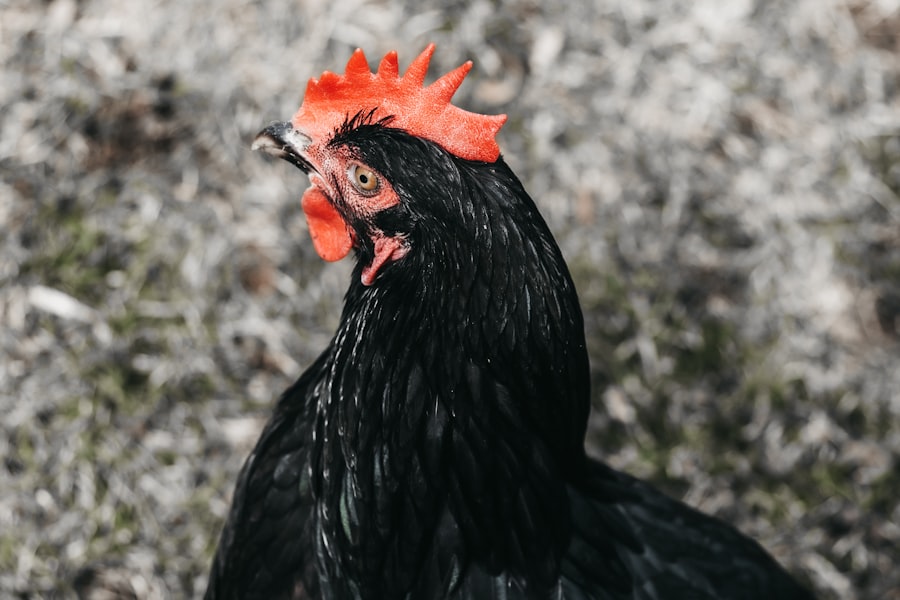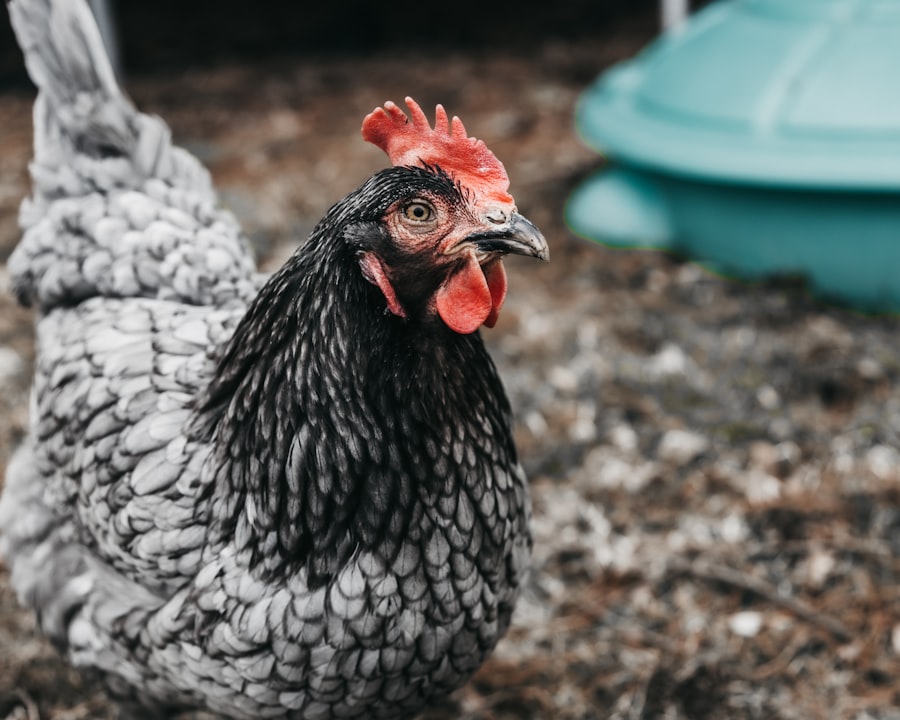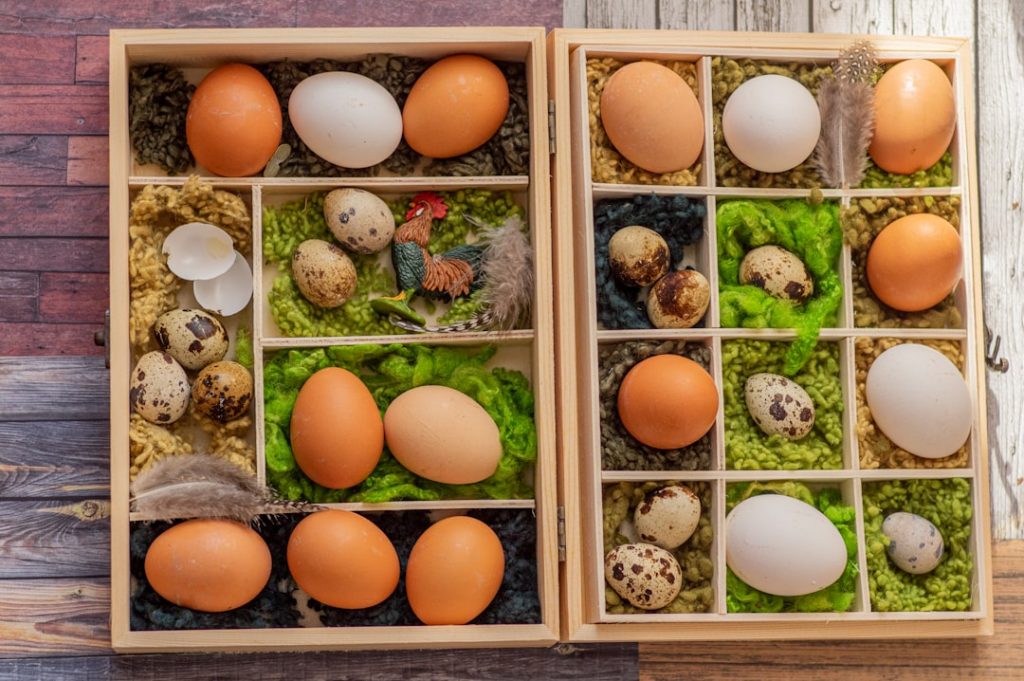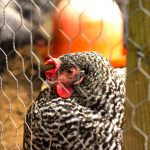Cats and chickens are common domestic animals that may coexist in rural or farm settings. However, their natural instincts can create challenges for their peaceful cohabitation. Cats, being natural predators, may view chickens as potential prey, posing a threat to the birds’ safety.
Conversely, chickens can be intimidating to cats unfamiliar with them, potentially causing stress or aggressive behavior in felines. The primary challenge in managing cats and chickens together is finding a balance that ensures the well-being of both species. This requires understanding their respective instincts and behaviors.
Cats’ predatory nature and chickens’ skittish tendencies are key factors to consider when identifying potential conflicts and developing mitigation strategies. Individual personalities and temperaments of both cats and chickens also play a significant role in their interactions. By comprehensively understanding these dynamics, it becomes possible to implement effective measures for creating a harmonious environment where both species can coexist safely.
Table of Contents
- 1 Creating a Secure Chicken Coop
- 2 Using Deterrents to Keep Cats Away
- 3 Providing Alternative Entertainment for Cats
- 4 Training and Socializing Cats
- 5 Seeking Professional Help
- 6 Living in Harmony
- 7 FAQs
- 7.1 What are some effective ways to keep cats out of the chicken coop?
- 7.2 Why is it important to keep cats out of the chicken coop?
- 7.3 Are there any natural deterrents that can be used to keep cats away from the chicken coop?
- 7.4 What are some signs that cats have been in the chicken coop?
- 7.5 Can cats and chickens coexist peacefully?
Key Takeaways
- Cats pose a threat to chickens due to their natural hunting instincts
- A secure chicken coop is essential to protect chickens from cat attacks
- Deterrents such as motion-activated sprinklers can help keep cats away from the chicken coop
- Providing cats with alternative entertainment, such as toys and scratching posts, can reduce their interest in hunting chickens
- Training and socializing cats can help them coexist peacefully with chickens
- Seeking professional help from a veterinarian or animal behaviorist may be necessary in some cases
- With the right precautions and interventions, cats and chickens can live in harmony on the same property
Creating a Secure Chicken Coop
Building a Predator-Proof Chicken Coop
One of the most effective ways to ensure the safety of chickens in the presence of cats is to create a secure and predator-proof chicken coop. This involves building a sturdy and enclosed structure that provides protection from potential threats, including cats. The coop should be constructed with durable materials and secure fencing to prevent cats from gaining access to the chickens.
Securing the Coop from Potential Threats
Additionally, it is important to ensure that there are no gaps or openings that cats can squeeze through, as they are known for their agility and ability to slip into small spaces. Installing locks or latches on doors and windows can also help to further secure the coop and prevent unauthorized entry by cats or other predators.
Providing a Comfortable and Safe Environment
Another important aspect of creating a secure chicken coop is to provide adequate shelter and roosting areas for the chickens. This includes providing nesting boxes, perches, and other comfortable spaces where the chickens can rest and feel safe. By creating a cozy and secure environment for the chickens, they are less likely to be stressed or anxious in the presence of cats, which can help to minimize potential conflicts.
Regular Maintenance and Inspection
By taking proactive measures to create a secure chicken coop, it becomes possible to provide a safe and comfortable living space for the chickens while minimizing the risk of cat attacks. Additionally, it is important to regularly inspect the coop for any signs of wear or damage that could compromise its security.
Using Deterrents to Keep Cats Away

In addition to creating a secure chicken coop, using deterrents can also be an effective strategy for keeping cats away from the chickens. There are various methods and products available that can help to deter cats from entering the chicken coop or the surrounding area. One common approach is to use scent-based deterrents, such as citrus sprays or essential oils, which are known to be unpleasant for cats.
By spraying these scents around the perimeter of the coop or in areas where cats are known to frequent, it can help to discourage them from approaching the chickens. Additionally, motion-activated devices that emit a burst of air or sound when triggered by movement can also be effective in deterring cats from entering the chicken coop. Another option for deterring cats is to use physical barriers, such as wire mesh or netting, to prevent them from gaining access to the chickens.
This can be particularly useful in areas where cats are known to climb or jump over fences or other obstacles. By installing barriers that are difficult for cats to navigate, it becomes possible to create a more secure environment for the chickens. It is important to regularly inspect these barriers for any signs of damage or wear that could compromise their effectiveness.
By using a combination of scent-based deterrents and physical barriers, it becomes possible to create a strong defense against cat intrusions and protect the safety of the chickens.
Providing Alternative Entertainment for Cats
In addition to using deterrents, providing alternative entertainment for cats can also help to minimize their interest in hunting or bothering the chickens. Cats are natural hunters and need mental and physical stimulation to keep them engaged and satisfied. By providing toys, scratching posts, and other forms of enrichment for cats, it can help to redirect their energy towards more appropriate activities.
Interactive toys that mimic hunting behaviors, such as feather wands or laser pointers, can provide an outlet for their predatory instincts without posing a threat to the chickens. Additionally, creating designated play areas or outdoor enclosures for cats can help to provide them with opportunities for exercise and exploration. Another important aspect of providing alternative entertainment for cats is to ensure that they have access to adequate food, water, and shelter.
By meeting their basic needs, it can help to reduce their motivation to hunt or bother the chickens out of hunger or boredom. Providing a variety of toys and activities that cater to their natural behaviors, such as climbing, pouncing, and stalking, can help to keep them mentally stimulated and engaged. It is important to regularly rotate and introduce new toys and activities to prevent boredom and encourage ongoing enrichment for the cats.
By providing alternative entertainment for cats, it becomes possible to redirect their focus away from the chickens and towards more appropriate forms of play and stimulation.
Training and socializing cats can also play a significant role in minimizing their predatory behavior towards chickens. By implementing positive reinforcement training techniques, it becomes possible to teach cats appropriate behaviors and responses in the presence of chickens. This can include rewarding them for calm and non-aggressive behavior around the chickens, as well as teaching them basic commands such as “leave it” or “stay.” Additionally, socializing cats with chickens from a young age can help to familiarize them with each other’s presence and reduce potential fear or aggression.
By gradually introducing supervised interactions between cats and chickens, it becomes possible to build positive associations and reduce the likelihood of conflict. Another important aspect of training and socializing cats is to provide them with opportunities for mental stimulation and enrichment. This can include puzzle feeders, interactive toys, and other activities that encourage problem-solving and cognitive engagement.
By keeping their minds occupied with stimulating activities, it can help to reduce their focus on hunting or bothering the chickens. Additionally, providing regular playtime and exercise for cats can help to release pent-up energy and reduce their inclination towards predatory behavior. By incorporating training and socialization into their daily routine, it becomes possible to foster positive behaviors and interactions between cats and chickens.
Seeking Professional Help

Expert Guidance for Feline Behavior
A veterinarian or animal behaviorist specializing in feline behavior and training can provide valuable insights into addressing specific behavioral issues in cats that affect their interactions with chickens. They can offer personalized training plans and strategies to modify problematic behaviors in cats.
Managing Cat-Chicken Interactions in Rural Settings
Consulting with a poultry expert or farm advisor can be beneficial in managing cat-chicken interactions in rural settings. They can provide practical advice on coop design, predator-proofing measures, and other strategies to ensure the safety of chickens in the presence of cats.
Accessing Specialized Knowledge and Expertise
By seeking professional help, you can access specialized knowledge and expertise to address complex issues related to cat-chicken cohabitation. This can lead to a more harmonious and safe living environment for both cats and chickens.
Living in Harmony
In conclusion, finding effective solutions for ensuring the peaceful coexistence of cats and chickens requires a multifaceted approach that takes into consideration their natural instincts, behaviors, and individual needs. Creating a secure chicken coop, using deterrents, providing alternative entertainment for cats, training and socializing cats, and seeking professional help are all important strategies for minimizing potential conflicts between these two animals. By understanding the dynamics between cats and chickens and implementing proactive measures, it becomes possible to create a harmonious environment where both animals can thrive without posing a threat to each other’s safety and well-being.
Ultimately, fostering positive interactions between cats and chickens requires patience, dedication, and a willingness to adapt strategies based on individual circumstances. By taking proactive measures to address potential areas of conflict and providing enriching environments for both animals, it becomes possible to create a peaceful coexistence where cats and chickens can live harmoniously together. With careful planning and thoughtful consideration of their unique needs, it is possible for cat owners and chicken keepers alike to enjoy the companionship of both animals without compromising their safety or well-being.
If you’re looking for ways to keep cats out of your chicken coop, you may also be interested in learning about the ideal size for a chicken coop door. Check out this article on Poultry Wizard for tips on creating a secure and predator-proof coop for your chickens.
FAQs
What are some effective ways to keep cats out of the chicken coop?
Some effective ways to keep cats out of the chicken coop include installing a fence with a overhang, using motion-activated sprinklers, and keeping the coop area clean and free of food scraps.
Why is it important to keep cats out of the chicken coop?
It is important to keep cats out of the chicken coop to protect the chickens from potential harm or stress caused by the presence of predators. Cats are natural hunters and may pose a threat to the chickens.
Are there any natural deterrents that can be used to keep cats away from the chicken coop?
Yes, there are natural deterrents that can be used to keep cats away from the chicken coop, such as citrus peels, coffee grounds, and lavender oil. These scents are known to repel cats.
What are some signs that cats have been in the chicken coop?
Some signs that cats have been in the chicken coop include scattered feathers, disturbed nesting areas, and missing or injured chickens. It is important to regularly inspect the coop for any signs of cat activity.
Can cats and chickens coexist peacefully?
In some cases, cats and chickens can coexist peacefully, especially if the cats are well-trained and the chickens are kept in a secure coop. However, it is important to monitor their interactions and take precautions to ensure the safety of the chickens.
Meet Walter, the feathered-friend fanatic of Florida! Nestled in the sunshine state, Walter struts through life with his feathered companions, clucking his way to happiness. With a coop that’s fancier than a five-star hotel, he’s the Don Juan of the chicken world. When he’s not teaching his hens to do the cha-cha, you’ll find him in a heated debate with his prized rooster, Sir Clucks-a-Lot. Walter’s poultry passion is no yolk; he’s the sunny-side-up guy you never knew you needed in your flock of friends!







